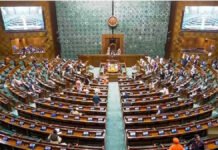The Indian government has voiced strong disapproval of a decision by US President Donald Trump to impose an additional 25 percent import tariff on Indian goods. The new levy brings the total tariff on many products to 50 percent and has been imposed in response to India’s continued purchase of Russian crude oil. The initial 25 percent tariff came into effect on 7 August, with the supplementary charge scheduled to be implemented 21 days later.
The Ministry of External Affairs (MEA) issued a statement calling the US action “extremely unfortunate,” “unfair, unjustified, and unreasonable.” The MEA reiterated India’s position that its oil imports from Russia are based on market factors and are crucial for ensuring the energy security of its 1.4 billion people. The ministry also pointed out that other countries are engaging in similar actions and questioned why India was being singled out. The statement concluded with a vow that “India will take all actions necessary to protect its national interests.”
Economic Impact and Trade Negotiations
The new tariffs have raised significant concerns among Indian exporters and industry experts. The Federation of Indian Export Organisations (FIEO) has expressed shock, stating that the 50 percent tariff could affect over 55 percent of India’s exports to the US, particularly in sectors such as textiles, gems and jewellery, and leather. Exporters fear that the high duties will make their products uncompetitive compared to those from countries with lower tariff rates.
While the overall macroeconomic impact on India’s GDP is expected to be minimal, the effect on specific sectors and small and medium-sized enterprises (MSMEs) could be severe. Many export orders have already been put on hold as buyers re-evaluate their sourcing decisions due to the higher costs. The new tariffs are also being viewed by some as a pressure tactic ahead of the sixth round of bilateral trade agreement negotiations between the two countries, which are scheduled to take place later this month.













